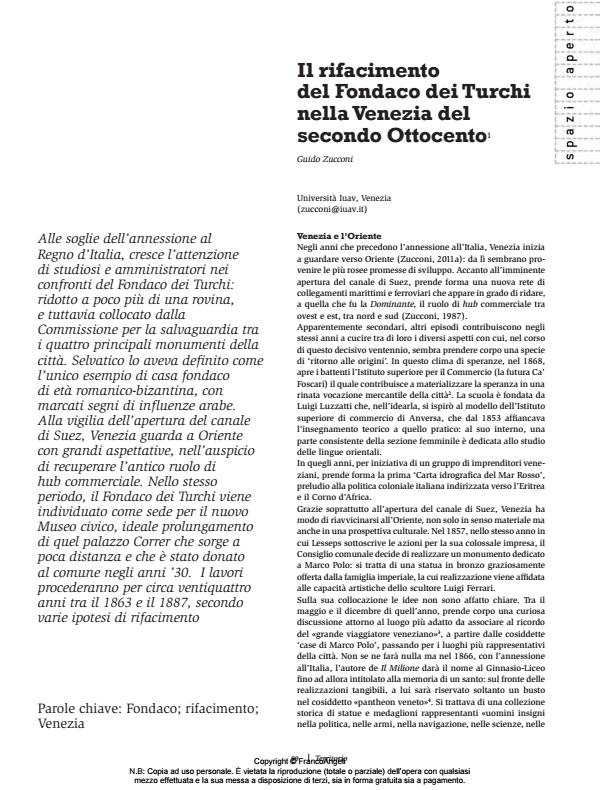Il rifacimento del Fondaco dei Turchi nella Venezia del secondo Ottocento
Titolo Rivista TERRITORIO
Autori/Curatori Guido Zucconi
Anno di pubblicazione 2014 Fascicolo 2014/68
Lingua Italiano Numero pagine 9 P. 99-107 Dimensione file 3941 KB
DOI 10.3280/TR2014-068017
Il DOI è il codice a barre della proprietà intellettuale: per saperne di più
clicca qui
Qui sotto puoi vedere in anteprima la prima pagina di questo articolo.
Se questo articolo ti interessa, lo puoi acquistare (e scaricare in formato pdf) seguendo le facili indicazioni per acquistare il download credit. Acquista Download Credits per scaricare questo Articolo in formato PDF

FrancoAngeli è membro della Publishers International Linking Association, Inc (PILA)associazione indipendente e non profit per facilitare (attraverso i servizi tecnologici implementati da CrossRef.org) l’accesso degli studiosi ai contenuti digitali nelle pubblicazioni professionali e scientifiche
Just before Venice was annexed to the Kingdom of Italy, academics and administrators were increasingly concerned by the Fondaco dei Turchi, then little more than a ruin. The Protection commission deemed it one of the city’s four main monuments, and Selvatico had termed it a unique example of a Roman-Byzantine home-cum-warehouse, with marked Arab influences. Awaiting the opening of the Suez Canal, Venice looked to the East with great expectations, hoping to regain its old role as a trade hub. At the same time, the Fondaco dei Turchi was identified as the home for the new Civic museum, the ideal continuation of Palazzo Correr nearby, donated to the city in the 1930s. The work would continue for about twenty-four years (1863-1887), following various restoration approaches.
Parole chiave:Fondaco; restoration; Venice
- Riflessi e ombre nel Mar Bianco Scambi e interazioni tra Europa, Impero ottomano e Turchia Marie Bossaert, (ISBN:978-88-6969-794-4)
Guido Zucconi, Il rifacimento del Fondaco dei Turchi nella Venezia del secondo Ottocento in "TERRITORIO" 68/2014, pp 99-107, DOI: 10.3280/TR2014-068017